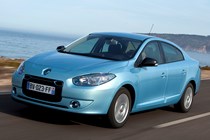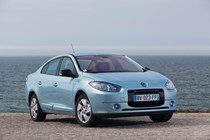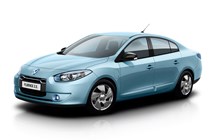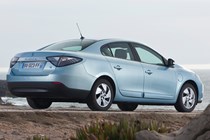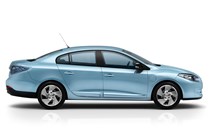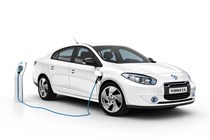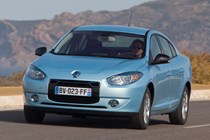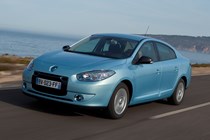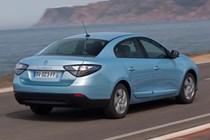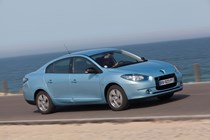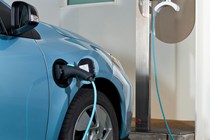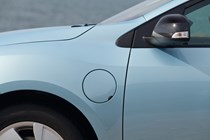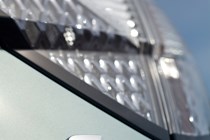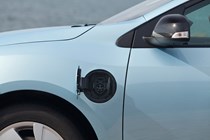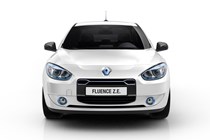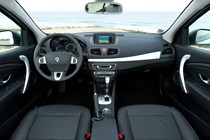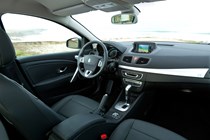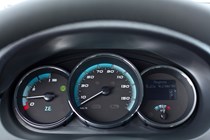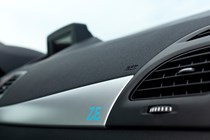
Renault Fluence Saloon (2012-2013) engines, drive and performance
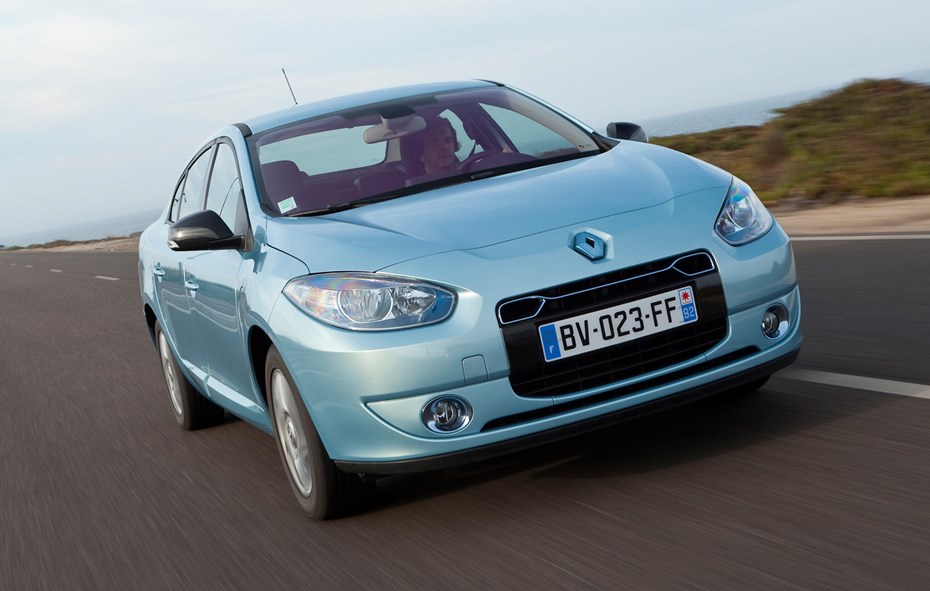
The Fluence is powered by an electric motor that generates a maximum of 95bhp and 226Nm of pulling power. This allows it to complete the 0-62mph sprint in 13 seconds. That’s not quick, as your average 1.6-litre diesel hatchback will do it in around 11 seconds. The Fluence is also limited to a top speed of 84mph, with Renault claiming this maximises the range of the battery.
Despite this, thanks to an electric motor’s ability to deliver maximum pulling power immediately, the Fluence feels surprisingly lively off the line. After about 50mph, however, that initial thrust dies off. This means that overtaking has to be well planned. Nonetheless, for daily use the performance is perfectly adequate and the silent Fluence will out-accelerate many a normal car at lower speeds.
There’s no gearbox to speak of, so the power is delivered consistently and smoothly. You simply select drive, or reverse, and you’re off. This makes the Fluence ideal for city use, rewarding you with a stress-free drive. A brake energy recovery system tops the battery up when you’re slowing, or driving down hills. It can take a little while to get used to, as initially the Fluence won’t coast freely.
You have to gently touch the accelerator to stop the car slowing itself down too much.
The Renault Fluence Z.E. steering is well weighted and this allows for precise and accurate cornering. There’s not much feedback, however, which limits your enjoyment on more vigorous roads and cuts confidence in fast bends. The ride quality is generally very good, with the Renault smoothing out even heavy bumps and cobbles well. The only downside is that it is quite softly sprung, resulting in marginally more body roll than is comfortable.
This is particularly noticeable when you’re driving across country at speed. Fortunately, as the Fluence will most likely be used in cities or for commuting, this shouldn’t prove an issue for most. Despite the electric motor’s ability to generate lots of torque at low speeds, there’s plenty of traction available and rarely will you find the Fluence scrabbling annoyingly out of junctions.
This is partly thanks to its traction and stability control systems, which help keep things in check.


